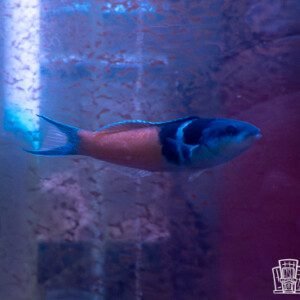Description
Scientific Name: Neocirrhitus armatus
Common Names: Flame Hawkfish, Brilliant Red Hawkfish, Red Hawkfish
Maximum Length: 4 inches
Minimum Aquarium Size: 30 gallons (113 liters)
Foods and Feeding Habits: Carnivorous; preys on small crustaceans, worms, and fish in the wild. In aquariums, feed frozen mysis shrimp, brine shrimp, or chopped seafood. Offer small portions 1-2 times daily to prevent overfeeding and maintain water quality.
Reef Safety: Reef-safe with caution; safe with corals but may eat small ornamental shrimp, crabs, or tiny fish. Monitor closely in mixed reef tanks.
Temperament: Semi-aggressive; territorial and may perch boldly on rocks or corals, eyeing tankmates. Best with fish of similar size and temperament. Avoid housing with small, passive fish or multiple hawkfish in smaller tanks to prevent conflicts.
Description: The Flame Hawkfish is a fiery favorite among aquarium hobbyists, and it’s easy to see why. Its vivid red-orange body practically glows against a backdrop of live rock or coral, making it a striking addition to any tank. Hobbyists admire its confident demeanor—this fish loves to perch like a sentinel, surveying its domain with sharp, curious eyes. It’s the kind of fish that adds personality to your aquarium, always ready to dart after a morsel or stake out its favorite spot. A 30-gallon tank with plenty of perches gives it space to thrive, and a diet of meaty foods like mysis shrimp keeps its colors vibrant. Pair it with tankmates that can hold their own, and you’ve got a captivating centerpiece that brings energy and elegance to your reef setup.
Fun Facts
- The Flame Hawkfish gets its name from its blazing red-orange hue, which intensifies under bright aquarium lighting.
- It’s a skilled hunter, often perching motionless before lightning-fast strikes on unsuspecting prey.
- In the wild, these fish are often found on branching corals, using them as both a lookout and a hideout.





